This post was sponsored and authored by Radiant Vision Systems, LLC
Introduction
Emissive OLED, microLED (uLED), and miniLED are emerging as the next wave of technology in the display market. This is exciting because these displays promise improved display performance and visual appearance with greater efficiency than other display technologies, thanks to their individually emitting pixel elements. Both OLEDs and microLEDs have superior contrast ratios and sharper images with deeper blacks and more vibrant colors than traditional LCDs. These emissive displays require no backlight, resulting in thinner, lighter-weight displays that use less electricity. OLEDs also bring a dramatic boost in responsiveness, about 1,000 times faster than existing technologies, virtually eliminating blur on fast-moving and 3D video. MicroLEDs match OLED technology for response time and view-angle performance, but exceed OLED in brightness and ruggedness, with even lower power consumption.
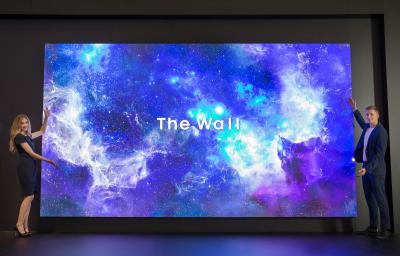
Figure 1 - The 219-inch microLED display The Wall by Samsung, shown at IFA 2019, September 6-11 in Berlin, Germany. (Source: Samsung)1
As manufacturers work to launch commercially viable emissive display products, high costs due to material prices and manufacturing yield issues have hindered widespread technology adoption most dramatically in large-format implementations, as they drive up end-customer prices. The smartphone market has been the most successful segment for OLED technology to date and will likely be the catalyst that drives long-term adoption of OLEDs and microLEDs for other applications. Display Supply Chain Consultants (DSCC) cites smartphones as the dominant OLED market, accounting for around 91% of units per year with revenue share around 79% by 20222. Yole Developpement (Yole) projects a similar trend for microLEDs, with a longer ramp up period, and a market reaching up to 330 million units by 20253. With this type of growth in demand, improvements in manufacturing efficiency are needed.
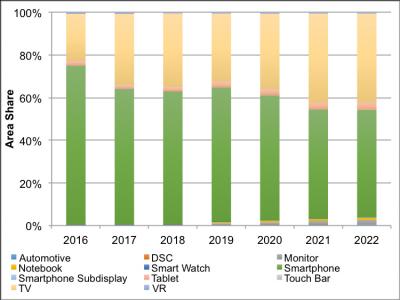
Figure 2 - The smartphone market leads the way for OLED adoption. [Source: DSCC's Quarterly OLED Shipment and Fab Utilization Report]2
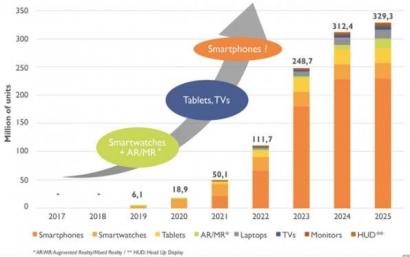
Figure 3 - Smartphones are similarly forecast to drive the microLED market. [Source: Yole's MicroLED Displays report]3
Although the near-term market size is small, analysts at DSCC predict that large-format OLED TVs will take second seat to smartphones, rising to 42% market share by 2022, overtaking LCDs by as soon as 20212. A limited sample of large-format microLED displays have been showcased by manufacturers like Samsung (The Wall) and Sony (Crystal-LED), whereas small-format displays continue to be more viable for mass production. For both OLED and microLED, low production yields due to manufacturing complexity and once manufactured visual quality issues impact the timing of viable market entry and drives up retail prices for finished display panels. Current commercially available, large-format OLED TVs are priced into the thousands of dollars (USD), while microLED screens remain cost prohibitive to most consumers, making lower-cost, high-definition LCD and LED options more appealing to the budgets of price-minded consumers. The price point for volume market adoption of new emissive display types and replacement of current technologies must be significantly lower, demanding greater efficiency and control in manufacture.
Display Manufacturing Challenges
OLED and microLED technologies add several unique challenges to the manufacturing process, regardless of the size of display.
Large-format OLED screen manufacturing has been somewhat costly to date due to inefficiency of deposition methods for adding organic molecules to their substrate (with the exception of the latest efficient inkjet printing methods), which has limited the application of OLED technology primarily to smaller screen sizes like smartphones. Likewise, producing an entire television screen out of microLED chips has so far proven to be challenging. MicroLEDs require new assembly technologies, die structure, and manufacturing infrastructure. For commercialization, fabricators must find methods that yield high quality with microscopic accuracy while also achieving mass-production speeds. As a point of comparison, a miniLED backlight screen may be made up of thousands of individual miniLED units; a microLED screen is composed of millions of tiny LEDs.
To fabricate a microLED display, each individual microLED must be transferred to a backplane that holds the array of units in place. The transfer equipment used to place microLED units is required to have a high degree of precision, with placement accurate to within +/- 1.5 µm. Existing pick & place LED assembly equipment can only achieve +/- 34 µm accuracy (multi-chip per transfer). Flip chip bonders typically feature accuracy of +/-1.5 µm but only for a single unit at a time. Both of these traditional LED transfer methods are not accurate enough for mass production of microLEDs.
There are also visual quality and performance issues. Inspecting OLED and microLED displays is in many ways more challenging than inspecting LCDs. Traditional LCD displays using LED backlights produce only a mostly uniform luminance (brightness) and color output across the display screen. With emissive display types, however, every individual emitter in the display can be subject to a high a degree of variability. For instance although microLEDs are LEDs traditional binning processes are virtually impossible for microLEDs, which can be as small as 1/100th the size of a conventional LED. Without these controls in place, ensuring brightness and color uniformity in microLEDs can be extremely challenging. It is necessary to be able to measure and quantify every pixel and subpixel element of an emissive display to identify defects and ensure uniformity, to produce the level of quality that consumers expect at these displays' higher price points.
Visual Quality Issues
Line Mura
In the OLED manufacturing process, material is deposited on a substrate to form the individual subpixels, while extremely tiny microLEDs are transferred to backplanes with the goal of achieving extreme precision. If this process is not completely uniform, implications emerge in terms of visual quality. One such issue is line mura, which appears as well-defined horizontal and/or vertical orientation in the display.
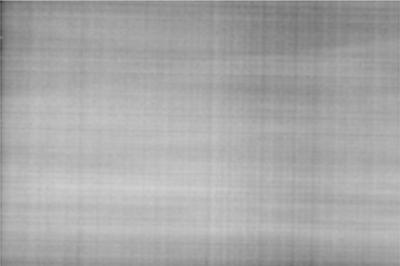
Figure 4 - Image of an OLED display with uncorrected line mura.
Subpixel Luminance Performance
Emissive display pixels are composed of red, green, and blue subpixels. When current is applied, each subpixel lights up individually, and output of each subpixel is also individually controlled. The brightness and color of each pixel in the display is determined by combining the subpixel outputs. Due to production discrepancies in the manufacture of emissive display types, there may be variations in luminance for the same electrical signal input throughout the population of same-colored subpixels on the display. This results in differences in brightness from pixel to pixel of the same color. When combined, subpixels of each color together outputting light at various brightness levels produce display pixels that exhibit even more variability, and overall display appearance appears low-quality.
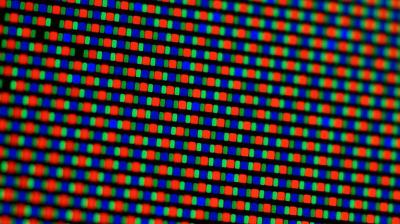
Figure 5 - Subpixels combine to create pixels with various colors and brightness.
Color Non-Uniformity
Another impact of inconsistent brightness levels at the display subpixels is reduced color accuracy and color non-uniformity across the display. To achieve accurate and uniform colors, the brightness of each individual same-colored subpixel must be tightly controlled. The reality is that even within a well-controlled manufacturing process, subpixels of emissive displays will have significant variations in brightness levels. When these variations are not compensated for, it may manifest as non-uniformity of color across the display, reducing picture quality to potentially unacceptable levels and so reducing production yields.
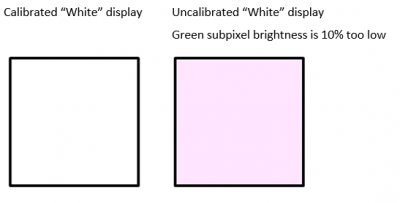
Figure 6 - Incorrect brightness levels create non-uniformity in color across an emissive display. Variations in uniformity may increase as subpixels of various outputs are combined to produce a single display color, such as white.
Imaging Colorimeter Applications for Emissive Displays
Imaging colorimetry-based display test systems have demonstrated success in improving quality and reducing production costs for traditional LCD and LED display screens. Testing applications span smartphones, tablets, laptops, TVs, and digital signage. These proven techniques can be adapted to emissive display production testing as well, enabling manufacturers to incorporate this technology into the same devices for visual quality of OLED and microLED displays, with the same positive return on investment.
The two primary components of a display test system are:
- Imaging Colorimeters, which provide accurate measurement of display visual performance that matches human perception of brightness, color, and spatial (or angular) relationships. High-performance imaging colorimeters can accurately measure the luminance (brightness) of individual subpixels in an emissive display as well as overall display uniformity.
- Test Execution and Analysis Software, which is production-line software for image analysis to identify defects and quality issues, quantify their magnitude, and assess the measurements to make pass/fail determinations. This software can also include display performance correction methods that can be adapted to identify variabilities in subpixel output, calculate correction factors, and correct variations that are unique to emissive displays.
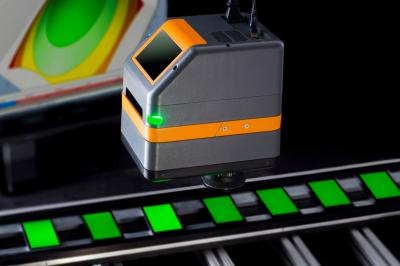
Figure 7 - Example of an imaging colorimeter in a production display test application. (Product shown: Radiant Vision Systems ProMetric I Imaging Colorimeter).
Improving End-of-Line Quality to Enhance Customer Experience
In traditional manufacturing processes, display visual performance is tested by human inspectors, resulting low control of the visual quality of delivered product. With the innate variability, extremely high resolutions, and elevated quality expectations in emissive displays, ensuring visual quality controls is becoming an even more significant issue. Human inspectors are not able to consistently and repeatably evaluate the visual qualities of these displays to a ensure the necessary objective, quantifiable controls.
Automated visual inspection (AVI) (also referred to as automated optical inspection (AOI)) using imaging colorimeters has multiple benefits, which improve quality control to increase efficiency in manufacturing, safeguard brand perception, and enhance the user experience.
Benefits of automated display inspection using imaging colorimeters include:
- Improved consistency in display visual performance testing from line to line, and location to location since all systems share the same calibration and test definitions
- Quantitative assessment of defects, with precise tolerances for objectively good or bad displays (pass/fail)
- Increased testing speed, which allows more tests to be run in the same time interval, increasing throughput while ensuring a more careful assessment and a better end product
- Simultaneous assessment of contextual (full-display) quality inspection (e.g., check uniformity and color accuracy) and fine-scale quality inspection (e.g., detect pixel- and subpixel-level defects)
When applied in OLED and microLED display testing, imaging colorimeter-based AVI simplifies testing while improving delivered product quality and production expense.
Correcting Emissive Displays to Improve Yield
As display size scales, yields decline drastically, and the cost of each component is much higher. At a certain point it becomes viable for manufacturers to perform correction (electronic compensation, or calibration) to improve display image quality. The concept is simple: by modifying the inputs to individual subpixels of an emissive display, previously identified dim subpixels can be adjusted to a uniform brightness level resulting in improved luminance uniformity and correct color across the display.
Display pixel uniformity correction requires, first, having in-display electronics that can control brightness of the individual subpixels and adjust this based on the calculated correction factors for each subpixel. Second, a measurement system is required to accurately quantify individual subpixel brightness and color, and compute specific correction factors for each of them. This method has been widely used for LED display screens made up of individual LEDs, and has been adapted to emissive displays like OLED and microLED using a correction technique called demura.
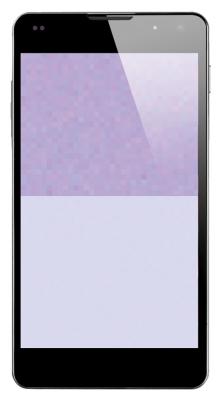
Figure 8 - Side-by-side measurement images showing the results of a demura method applied for correction of emissive displays, captured by a Radiant Vision Systems ProMetric I Imaging Colorimeter; before demura (left) and after (right).
The demura method employs three distinct steps:
- Measurement of each subpixel in the display to calculate luminance values at each pixel location (performed on different test images to measure each series of same-colored subpixels) using a high-resolution imaging colorimeter.
- Calculation of correction factors needed to normalize luminance discrepancies between subpixels in the display using test analysis software.
- Application of correction factors to the display signals using an external control IC (integrated circuit) system.
Once a display is completely assembled, test images can be displayed on-screen to target specific output color values. These images enable measurements and calibration to be computed for each of these values. For example, a green screen with all green subpixels turned on can be used as a sample image and the imaging colorimeter can measure and record the brightness of each individual green subpixel. This is repeated for all the primary colors and, usually, white. This data can be gathered in the course of ordinary quality testing of the emissive display.
Calculating luminance values of each and every subpixel in extremely pixel-dense OLED and microLED displays, however, can be challenging. For Full High Definition (FHD, 1920 x 1080 pixel) and lower-resolution displays, a single 29-megapixel imaging system offers sufficient resolution for testing. However, for higher-resolution displays (for example, Quad High Definition or QHD, 4K, and now 8K), even very high-resolution imaging systems may be unable to capture all pixels in a single image for complete analysis, especially for today's increasingly large displays (where a larger spatial area must be measured). To overcome this challenge and adapt a measurement method for any arbitrary size or resolution display, a demura method may employ a measurement process that combines data from a Spaced Pixel Test Pattern analysis, a patented method (US Patent 9135851 by Radiant Vision Systems) that can be employed using a single photometric or colorimetric imaging system.
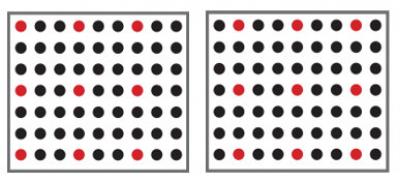
Figure 9 - Examples of the first two patterns used in the Spaced-Pixel Test Pattern method of pixel-level luminance measurement for extremely high-resolution displays.
Using a Spaced Pixel Test Pattern, dot matrix patterns of pixels are illuminated at intervals and measured by the imaging system in multiple passes. Measurements are repeated for all dot-matrix patterns until each display pixel is analyzed in its illuminated state. When using an imaging system with sensor resolution higher than the display itself, each display pixel can be tested over many sensor pixels, ensuring the highest accuracy of the associated display pixel's measured luminance value.
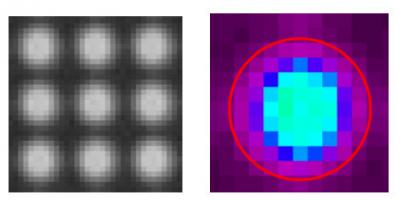
Figure 10 - During the Space-Pixel Test Pattern method, each illuminated display pixel is automatically registered by the analysis software and defined within a region of interest (ROI). Because the imaging system resolution is much higher than the display resolution, each display pixel may be measured across an ROI captured by multiple sensor pixels, in this case about 10x10 sensor pixels to a single display pixel.

Figure 11 - Additionally, ROI are dynamically defined regardless of OLED subpixel layout or shape, meaning that any arbitrary pixel pattern can be measured to apply demura to any display design.
Once all patterns of illuminated pixels have been analyzed, the test and analysis software of the demura solution combines all measurement images into a single synthetic image with the same resolution as the measured display (one sensor pixel to every display pixel). This image depicts every display pixel in rows and columns, providing accurate x,y coordinates for each pixel and their associated luminance values. This step in the demura process enables accurate detection of non-uniform pixels and their exact coordinates where correction coefficients for luminance may be applied.
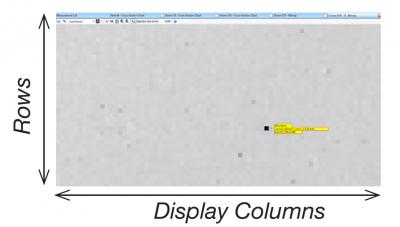
Figure 12 - Software locates the defective pixels in the display using a synthetic image that combines the data from multiple high-resolution measurement images of the display, taken by the imaging system.
Once luminance values at each pixel are known, correction factors can be computed and applied to the electrical input of each individual subpixel, ensuring that brightness and color will be accurate and uniform across the entire display (including at all gray levels). When this demura correction process is applied to the finished OLED or microLED display, there is a significant improvement in display visual quality. The net effect of demura is that displays that would have failed quality inspection without electronic compensation will now be able to pass, thereby reducing waste in manufacturing, improving cost efficiency, and increasing production yield.
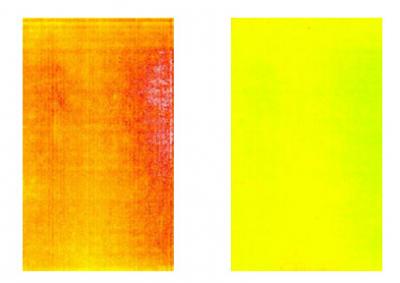
Figure 13 - Measurement images of a blue test screen on an OLED display, before and after demura correction (shown in a false-color scale to illustrate luminance levels).
Conclusion
OLED and microLED technologies are poised to produce the next generation of display devices, and especially unique applications like curved, flexible, and transparent displays. However, technical issues related to image quality and production yields need to be resolved before these new emissive display types can be considered commercially viable beyond the small-format smartphone or smart device market. The issues facing OLED and microLED manufacturers, although unique, are similar to technical issues that have already been solved using demura (pixel uniformity correction) methods in LCD production and for LED screen manufacturers. Using high-resolution imaging colorimeters, and effective automated test and inspection software, demura can be easily deployed within production lines to ensure the visual quality of emissive display types, safeguarding manufacturing costs and driving the anticipated market growth.
About Radiant Vision Systems
Radiant Vision Systems provides global support for display test applications, using high-resolution imaging colorimeters and photometers, and application-specific software packages. Our support staff provides engineering, installation, training, maintenance, and calibration services. Radiant Vision Systems has offices in the US, China, Japan, Korea, and Europe, supporting thousands of imaging colorimeters currently deployed on hundreds of production lines worldwide.
References:
- Samsung. (2019, September 6). IFA 2019: Samsung Electronics celebra cinco cadas de diser el futuro. Retrieved from: https://news.samsung.com/ar/ifa-2019-samsung-electronics-celebra-cinco-decadas-de-disenar-el-futuro
- DSCC. (2018, March). DSCC Releases Latest OLED Forecast. Retrieved from: https://www.displaysupplychain.com/blog/dscc-releases-latest-oled-forecast
- Yole Developpement. (2017, February). MicroLED Displays report.

